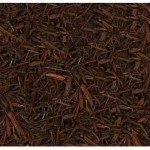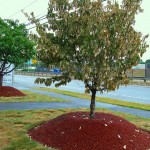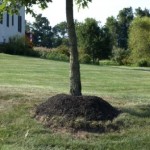Written by Rich Blankenship
The Mulching of America
During every spring season a phenomenon occurs that is referred to as ‘The Mulching of America.’ You leave for work in the morning and when you come home in the evening your neighbor’s driveway has a large pile of mulch on it. This scenario happens almost every day for a few months in the spring until suddenly the landscape is adorned with ribbons of brown. We are here to give you a few mulching do’s and don’ts with your landscape.
The problem is, most folks apply mulch because they like the aesthetic value or just think they are suppose to do it. They often apply a subsequent application within a few short months, just because they like the dark color. Although mulch can be looked at as aesthetic, it is really a result of good horticulture and should be viewed as such.
Mulching has become sort of a rite of spring passage and something for you to spend your Saturday afternoons doing, rather than a horticultural landscape function better left to the professionals. This has resulted in a lot of hard work done badly, and an epidemic of dead or dying plants.
Caution – Too Much Mulch Can Damage Your Tree
In general, an assessment of how much mulch you still have in your planting beds should be made. If you still have a layer of at least an inch you should cultivate it for aeration and add a light top dressing, an inch or so at most. Mulch should never be piled high upon the bark of a tree or over perennials. This is called ‘volcano mulching’ in the industry. It only serves to rot perennials and bark and cause abnormal root growth above the root flare, allowing girdling to take place. This is a very slow death, but certain. Applied properly, mulch will keep the soil moist, keep plants from drying out faster, and suppress weed development. As it breaks down it will add organic matter to your soil.
During new plant installations apply mulch over bare ground to a two inch depth, no more. The subsequent season may require a freshening up. For greater weed control a pre-emergent herbicide should be applied before the mulch is spread. I prefer the plain hardwood bark mulches rather than the dyed products on the market today. Mulching is not really so much about the color but the true benefit to the plants being protected.
Spreading mulch can appear to look like an easy task that doesn’t require any finesse or know how. I can assure you that it does require a greater degree of skill than you think and there is a huge difference in a professional job done right using the proper techniques and care compared to an amateur job done poorly. When spring arrives, and you are ready to help mulch America, spend some extra time to make sure you are using the proper techniques or consider allowing a professional to help you.
Click here for additional information from Purdue Ag Extension Service.




If you use a landscaping fabric under the mulch, do you still have to use herbicide? Or, is the fabric bad for the tree too?
No, but the herbicide will give extra control over time as a dirt layer will build up in the mulch allowing weeds to germinate above the fabric. If fabric is used, be sure to leave ample space around the base of all woody plants to allow for water and growth.